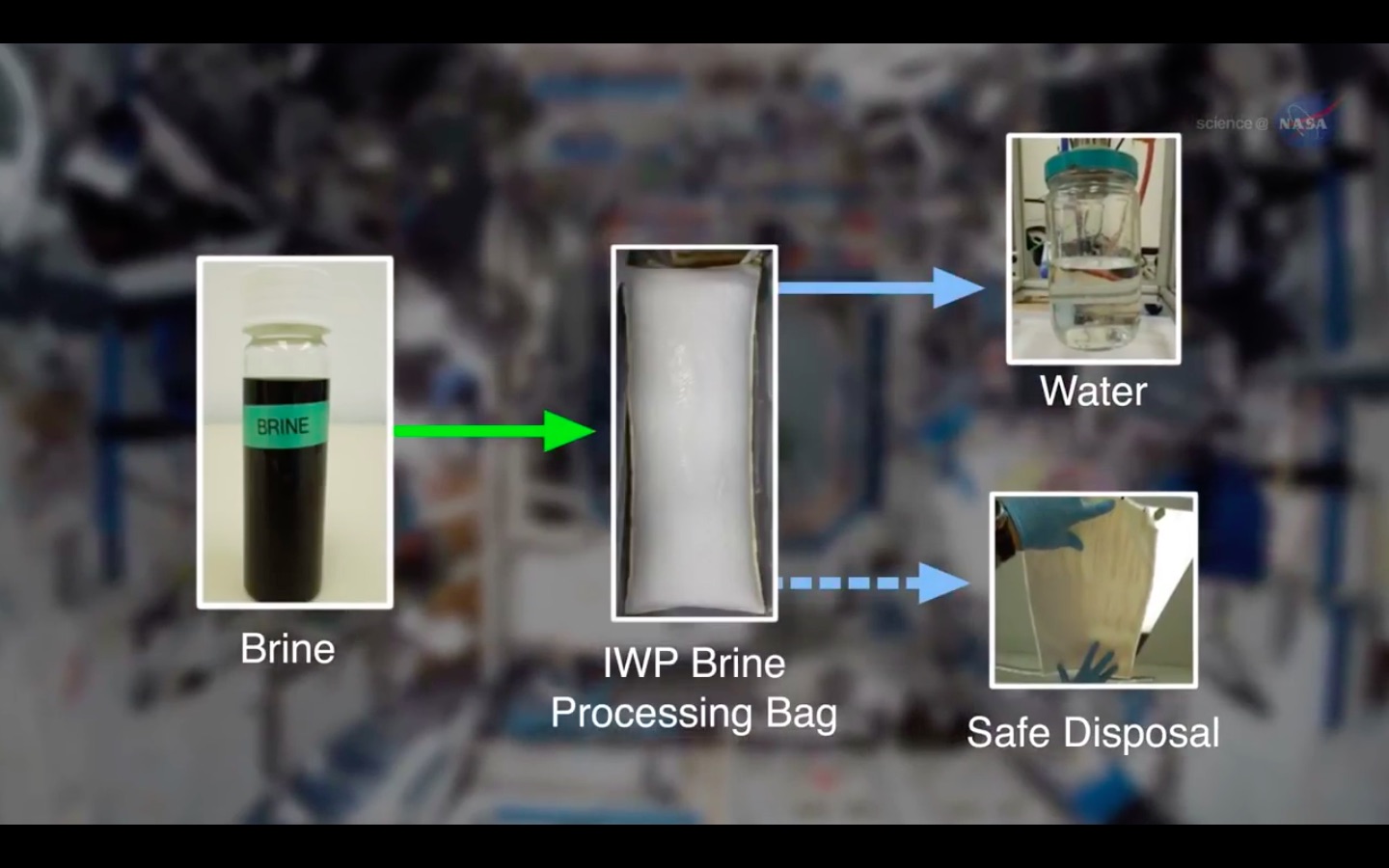So the diagram Organic Marble posted is just the sort of thing I was looking for. But I thought I'd post some information I discovered on the chemistry of what remains unclosed in the system.
This is actually from a Wikipedia link that uhoh added to my question, and it answers everything I wanted to know, chemistry-wise.
The current system
The article discusses how the Sabatier system basically allows them to recover the oxygen from exhaled $CO_2$ by combining it with hydrogen from water:
$$2H_{2}O \overset{hydrolysis}{\rightarrow}
2H_2 + O_2 + \overset{food}{C} \overset{respiration}{\rightarrow}
CO_2 + 2H_2 + \overset{added}{2H_2} \overset{sabatier}{\rightarrow}
2H_{2}O + \overset{discarded}{CH_4}$$
source
You end up with the same amount of water out that you put in, so removing those two oxygens and four hydrogens, leaving only what's consumed and produced, you get:
$$\overset{food}{C} + \overset{added}{2H_2} \rightarrow \overset{discarded}{CH_4}$$
Where does the extra hydrogen come from? The Wikipedia article points out that this is supplied by hydrolysis of water, which is where the "long-term deficit of water" that Organic Marble mentioned comes from.
Closing the loop
The Wikipedia article goes on to mention possible ways to recover the hydrogen as well.
Pyrolysis is a simple reaction which uses heat to separate carbon from hydrogen:
$$CH_4 \overset{heat}{\rightarrow} C + 2H_2$$
The article mentions the carbon would end up as an "easily removed" deposit of graphite. As the "[citation needed]" indicates, the practicality of this very much remains to be seen.
To avoid astronauts having to deal with chiseling out a bunch of graphite, you could perform incomplete pyrolysis, wasting some hydrogen but leaving the carbon in gaseous form as acetylene:
$$2CH_4 \overset{heat}{\rightarrow} C_{2}H_{2} + 3H_2$$
An alternative they're apparently investigating is replacing the Sabatier with the Bosch reaction, which wastes no hydrogen, but once again leaves astronauts to deal with the carbon as graphite:
$$CO_2 + 2H_2 \overset{heat}{\rightarrow} C + 2H_{2}O$$
Postscript
If you're thinking "Wait, we don't just eat pure carbon as food!" then yes, you're right, even the first equation isn't complete.
Food is complicated, but if we simplify it to sugars like glucose ($C_{6}H_{12}O_{6}$), which are basically groups of $CH_{2}O$, then it looks like:
$$2H_{2}O \overset{hydrolysis}{\rightarrow}
O_2 + 2H_2 + \overset{food}{CH_{2}O} \overset{respiration}{\rightarrow}
H_{2}O + CO_2 + 2H_2 + \overset{added}{2H_2} \\ \overset{sabatier}{\rightarrow}
3H_{2}O + \overset{discarded}{CH_4}$$
Basically, the hydrogen and oxygen from food ends up yielding more water, which ends up in the station system. Food ends up being another way of re-stocking the station's water supplies.
Indeed, respiration of food hydrates you completely independently of its actual $H_{2}O$ content! There are desert rodents which actually drink no water, surviving only on the water liberated from their food.



